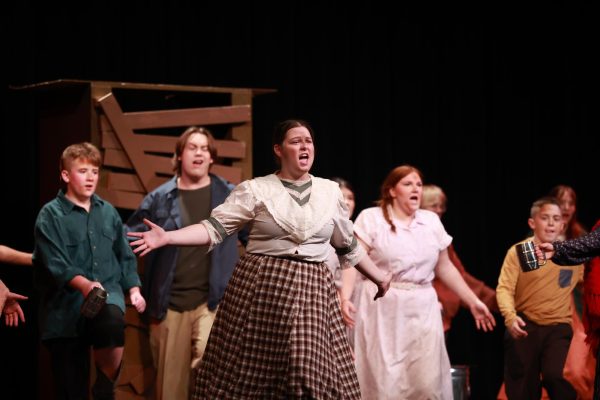Tuvan throat tunes captivate audience
In a generation filled with the sounds of Miley Cyrus, Macklemore and Imagine Dragons, a new kind of music has made its way across the United States offering this generation a totally new sound. The only similarity is the reaction from the crowd.
West Texas A&M University hosted a free concert April 22 featuring the Tuvan throat singing group, Alash. Tuva is located in the Russian Federation, just north of Mongolia and has been a part of China, Mongolia and has also been an independent country.
“Tuva has managed to maintain its integrity,” said Sean Quirk, Alash’s manager, producer and interpreter. “The tradition is alive, and it’s vibrant. The Tuvan mission is that this generation sees their task as making sure they really understand the roots the ancestors gave them, but also not stopping there. We’re making friends, and we’re opening minds.”
Alash has gone on 17 tours during the past eight years in the United States. They traveled straight from New York to Canyon in a van the Saturday before the concert at WTAMU then left for Austin after taking pictures with and signing autographs for attendees. CDs were available for purchase after the concert to support Alash on their tours and other production of albums.
It’s really such a foreign concept to Western ears and Western music.
— Brandon Farren
“If you hear it on a CD you’re like, ‘Oh that’s kind of neat,’” head Canyon High School choir director Brandon Farren said. “But when you see how they create it, it just blows your mind.”
Members of Alash, Bady-Dorzhu Ondar, Ayan-ool Sam and Ayan Shirizhik, held a lecture, performance and discussion on Tuva and throat singing earlier that day at WTAMU. Members of Canyon High School’s show choir, Ovation, attended the workshop and learned about all the different styles of Tuvan throat singing which are Sygyt, Kargyraa, Borbangnadyr, Ezenggileer and Xöömei. Each style uses different muscles in the throat and singing mechanism to create overtone. Farren said he studied Tuvan throat singing in music history classes while he attended WTAMU but had never seen it live.
“It’s really such a foreign concept to Western ears and Western music,” Farren said. “They use a whole different set of muscles, structures and style. I’m very impressed with them and their musicality.”
Tuvan music shares many of the same concepts of Western music. Several of these themes include fast horses and women, just like many of the currently popular country songs. Alash said they feel a connection with the Texas Panhandle because of the landscape and agriculture. Quirk, a native of Milwaukee, Wisconsin said he pursued his interest in Tuvan music and culture by moving to Tuva in 2003 where he met members of Alash.
“Like anything, whether it’s learning to crochet or ride a horse, it requires dedication and concentration.” Quirk said. “By going over to Tuva and immersing myself in the culture and the language, I was able to learn fairly swiftly.”
Senior Shane Price, choir member and a future music major, attended both events held by Alash. Price said he might study abroad in Tuva while attending University of North Texas.
“Their concept of music is different from ours, but they probably have a more powerful connection to the music than we do,” Price said. “I think it is the coolest sounding type of singing that I’ve ever heard in my entire life.”
Farren has been diagnosed with synesthesia, the combination of two senses. With his type of synesthesia, Farren visualizes different colors in his mind when he hears different tones.
“It was an interesting palette of colors that I haven’t seen,” Farren said. “It’s just a different set of tones. It created another scene in my head that I’ve never seen before.”

Hello! My name is Maisie Dyer, I am a senior, third year staff member and associate editor of the Eagle’s Tale and Eagle’s Tale Online. I am also the senior class publicist, executive vice president of the varsity choir, Rocky the eagle, and a member...

Hellllloooo! My name is Abby Caviness, and this is my third year on staff. Though my height suggests otherwise, I am a senior and will turn 18 on 11/11. I am a member of the Soaring Pride Band as a marimba player and an oboe player during concert season....










